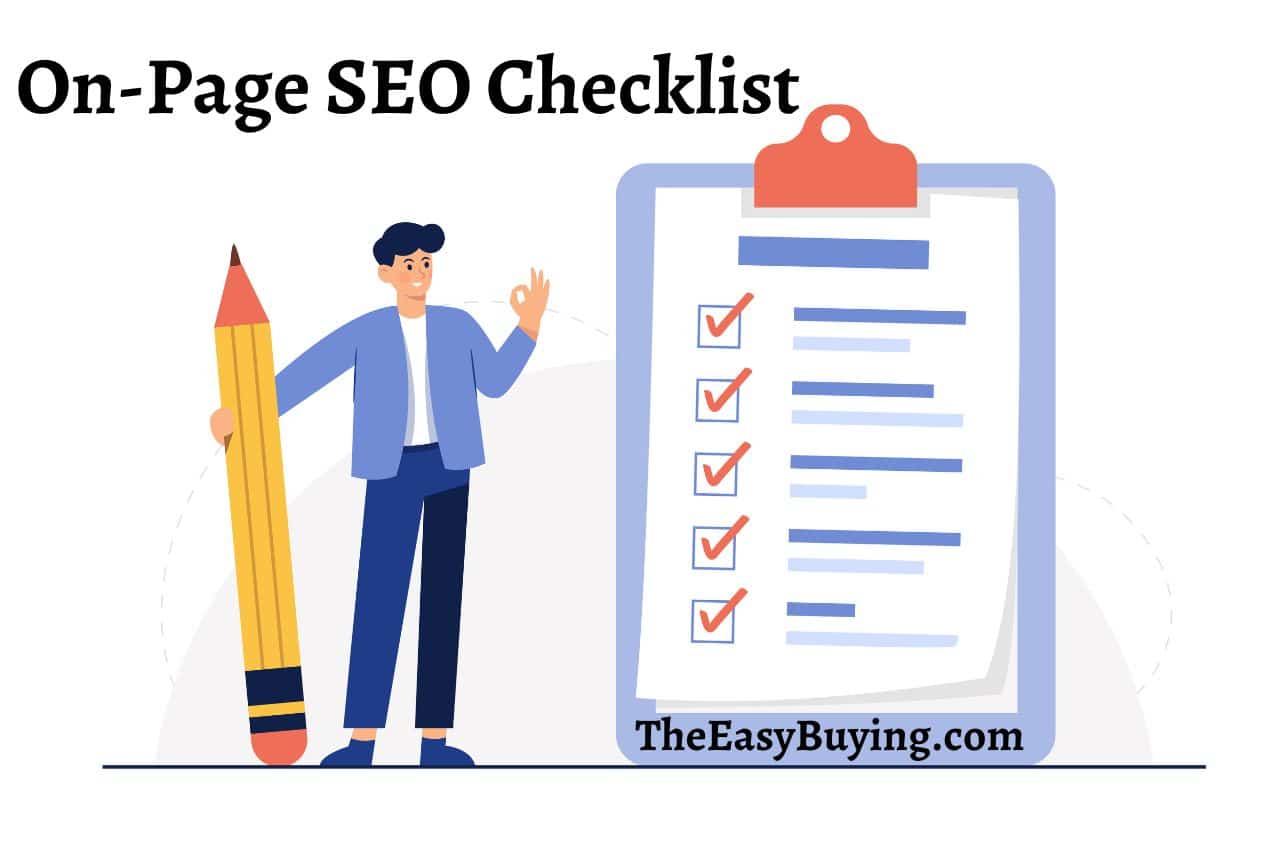If you’re looking to rank higher in Google and other search engines, your content needs to be optimized for on-page SEO. In this guide, we’ll outline an On-Page SEO checklist that can help you improve your site’s overall visibility. By following these tips, you’ll be on your way to achieving top rankings in 2022!
SEO has become an integral part of any business, without it, your website will not be seen by search engines and potential consumers. The good news is that the on-page SEO process can now be made much easier with AI-powered software.
In order to rank well in search engines, your website must be optimized for on-page SEO. This means ensuring that your website is properly formatted, has a clean and user-friendly design, and is properly optimized for keywords.
What is SEO?
SEO is the process of optimizing a web page for search engine indexing. The goal is to make the page appear as high on the search engine results pages (SERPs) as possible so that it will receive more clicks from potential customers. In order to be successful with SEO, you need to understand three key terms: on-page optimization, backlink building, and link quality. In this guide, I will discuss on-page optimization in depth.
Also Read: What is SEO and Its Importance in Digital Marketing?
What is On-Page SEO?
On-page SEO is the process of improving the visibility and ranking of a website’s pages in search engines. This can be achieved by optimizing text, titles, metadata, images, and other content on the pages of a website.
There are many different factors that go into on-page SEO, but the most important thing to remember is that it’s an ongoing process. You need to keep your website updated and changes made to your content regularly in order to improve your rankings.
Why is On-Page SEO Important?
On-page SEO is one of the most important aspects of a website’s optimization. This means making sure the content on your site is high quality, engaging and helpful to search engines. When done correctly, on-page SEO can help improve your website’s ranking in search engine results pages (SERPs).
An on-page SEO can help you improve your website’s search engine rankings. It can help you identify and fix issues with your website’s content, layout, and design. Following an on-page SEO, a checklist can help you improve your website’s overall ranking in search engines. Here are some of the benefits of using an on-page SEO checklist:
On-Page SEO Checklist
On-page SEO is the process of optimizing a website’s content and structure to promote better visibility and organic search engine results. It entails ensuring that every aspect of a website, from the title tags and meta descriptions to the keywords used in the content, is optimized for the search engines.
There are a number of things you can do to improve your on-page SEO, but here’s a checklist of some of the most important:
Make sure your website’s title tags are relevant and keyword-rich.
Title tags are one of the most important factors in determining how well your website will rank in Google. They should be no less than three words long and include at least one keyword, but ideally, they should be four or five words long with multiple keywords.
Use keyword density throughout your content.
Keyword density is simply how many times a specific keyword appears in a given piece of content. For example, if you write about “cheap flights to Miami”, you would want to use keywords like “Miami flights”, “Miami airport”, and so on. Keyword density is especially important for longer titles since it gives Google more opportunities to showcase your site in its search results pages (SERPs).
Make sure all your images are appropriately tagged with captions containing appropriate keywords.
For example, if you have an image featuring a hotel advertisement, make sure the caption includes the keywords “hotels in Miami”. This will help your images show up higher in Google search results when people search for those keywords.
Use keyword-rich titles and meta descriptions to improve click-through rates (CTRs).
Titles and meta descriptions are the first things that potential visitors see when they visit a website, so make sure they are compelling and keyword-rich. Use phrases like “discount flights to Miami” or “the best hotels in Miami” to boost your CTRs.
Make use of social media to promote your website.
Not only will this help you build awareness for your brand, but it can also help you attract new visitors who are specifically looking for information about your topic. For example, if you run a blog about travel, promote it on Twitter and Facebook.
Ensure your website is mobile-friendly.
Google has started penalizing websites that are not mobile-friendly, which can impact their ranking in the search engine results pages (SERPs). Make sure all your pages look good on mobile devices, including your title tags, images, and content.
Update your website regularly.
Google rewards websites that update their content regularly with better SEO results. This means regularly adding fresh content to your website, including new blog posts, articles, images, and so on.
Monitor your website’s performance monthly and make any necessary adjustments.
Always be on the lookout for changes in your website’s traffic and search engine ranking – if they change significantly, it might be time to make some tweaks to your on-page SEO strategy.
While there is no one-size-fits-all approach to improving your on-page SEO, following these tips will help you improve your site’s visibility and ranking in search engines.
The Benefits of Using an On-Page SEO Checklist
The on-page SEO checklist can be a valuable tool for optimizing your website. It can help you to identify factors that may be impacting your site’s ranking and can help you to make necessary changes.
Below is a list of some of the benefits of using an on-page SEO checklist:
Improves Website Traffic and Rankings
One of the primary benefits of using an on-page SEO checklist is that it will improve website traffic and rankings. By checking for incorrect spelling or grammar, removing duplicate content, and improving your site’s layout and design, you can ensure that your site is easier to navigate and find in search engine results pages (SERPs). This will result in higher clickthrough rates (CTRs) and more visits from potential customers. In addition, improving your website’s ranking will increase the amount of organic traffic it receives, meaning no paid advertising is necessary!
Reduces Time spent on Maintenance tasks
Another benefit of using an on-page SEO checklist is that it can reduce time spent on maintenance tasks. By ensuring that all aspects of your website are correct, you can save yourself a lot of time later on when trying to fix errors or update content. This not only saves you time but also allows you to focus more attention on growing your business rather than fixing small mistakes.
Helps You Avoid Potential Google Penalties
One of the most common penalties that website owners face from Google is being penalized for having incorrect spelling or grammar. By following an on-page SEO checklist, you can avoid these penalties and maintain your site’s ranking in the search engines.
Provides a Level of Consistency
Another benefit of using an on-page SEO checklist is that it provides a level of consistency. By following the same guidelines throughout your site, you can ensure that all elements are optimized. This will help to create a more cohesive look, which may further increase your site’s rankings and traffic.
Improves Overall Site Quality
Conclusion
Finally, using an on-page SEO checklist can also improve overall site quality. By ensuring that all content is well-written and error-free, you will create a site that is easier to browse and more user-friendly. This will help to draw in more customers and increase your site’s overall SEO ranking.











